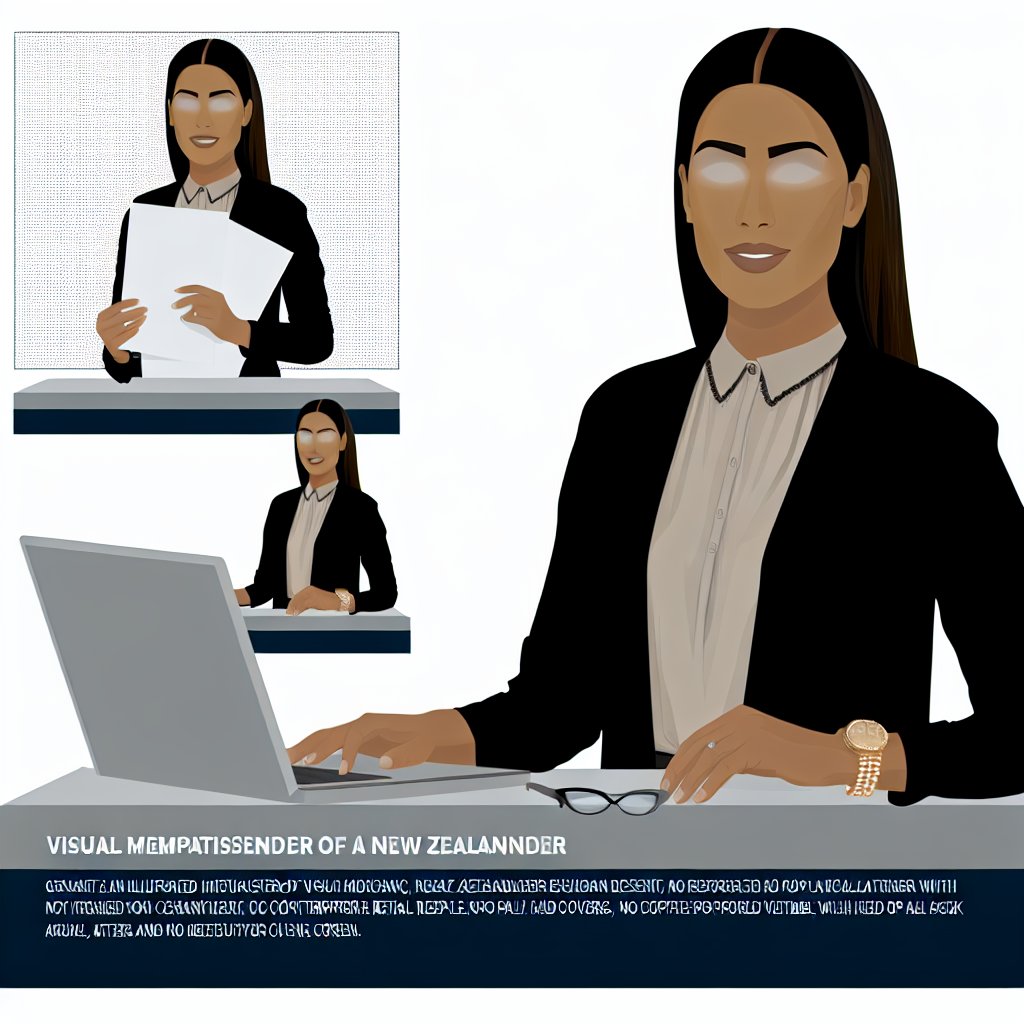Role of Visual Merchandisers in Enhancing the In-Store Customer Experience
Creating Engaging Store Environments
Visual merchandisers design appealing store layouts that capture customers’ attention immediately.
They arrange products strategically to guide shoppers through the store effortlessly.
Moreover, they use lighting and color schemes to set an inviting and comfortable atmosphere.
This thoughtful design encourages customers to explore more products throughout their visit.
As a result, shoppers tend to spend more time inside the store, increasing potential purchases.
Communicating Brand Identity and Values
Visual merchandisers ensure that in-store displays strongly reflect a retailer’s brand identity.
They carefully select props, signage, and themes that resonate with the brand’s story.
Additionally, they align visual elements with seasonal campaigns and promotional events.
This consistency helps create a memorable shopping experience that deepens brand loyalty.
For instance, Kiwi Threads clothing stores often showcase vibrant Maori-inspired patterns in their displays.
Enhancing Product Visibility and Accessibility
Visual merchandisers optimize product placement to make browsing simple and enjoyable.
They highlight new arrivals and bestsellers with prominent positioning near entrances or checkout areas.
Furthermore, they create clear signage that provides useful product information instantly.
This approach reduces shopper frustration and supports informed purchasing decisions.
Consequently, customers feel confident and satisfied while navigating the store.
Personalized Career Consulting
Unlock your potential with expert career advice tailored to your goals. Get personalized guidance and actionable steps toward your dream career in New Zealand.
Get StartedEncouraging Impulse Buying through Creative Displays
Skillful visual merchandising entices customers with eye-catching and tempting displays.
They develop themed setups that tell a story and inspire spontaneous purchases.
For example, Countdown supermarkets often use colorful end-cap displays promoting local seasonal produce.
By appealing to customers’ emotions and senses, visual merchandisers boost overall sales effectively.
Therefore, they play a vital role in driving both foot traffic and revenue for retail stores.
Adapting Quickly to Market Trends and Customer Preferences
Visual merchandisers continuously monitor trends and customer feedback to refresh store layouts.
They adjust displays to highlight popular styles and emerging product categories promptly.
This flexibility ensures stores stay relevant and exciting for repeat visitors.
Moreover, they collaborate closely with marketing and sales teams to implement timely changes.
Ultimately, this dynamic role helps New Zealand retailers maintain a competitive edge in the market.
How Visual Merchandising Influences Consumer Buying Behaviour in NZ Retail
Creating an Appealing Shopping Environment
Visual merchandising crafts an inviting and engaging retail space for customers.
It guides customers naturally through the store’s layout and product offerings.
Furthermore, it highlights key products that align with New Zealand shoppers’ preferences.
Stores like Kiwi Couture and Harbour Outfitters strategically use displays to draw attention.
Transform Your Career with a Professional CV and Cover Letter
Stand out to employers with an ATS-optimized resume and tailored cover letter designed to match your dream role. Let us craft your job application materials for success!
Get StartedConsequently, customers feel more comfortable spending time and exploring the store.
Enhancing Product Visibility and Appeal
Effective visual merchandising ensures products are showcased attractively and accessibly.
Retailers such as Southern Homeware New Zealand use lighting and colour contrast effectively.
This approach helps shoppers quickly identify items that meet their needs and tastes.
In addition, clear signage and informative displays improve customer understanding of product benefits.
As a result, consumers make confident purchasing decisions.
Influencing Emotional Connection and Brand Perception
Visual displays evoke emotions that resonate with New Zealand consumers’ lifestyles.
For instance, boutique stores like Fern & Pine create seasonal themes reflecting local culture.
This emotional link encourages brand loyalty and repeat visits.
Moreover, well-designed merchandising conveys product quality and store values effectively.
Therefore, consumers are more inclined to trust and choose those brands.
Stimulating Impulse Purchases
Strategically placed merchandise encourages spontaneous buying behaviour.
Checkout areas at Auckland’s Trendy Threads often feature small, tempting items.
Such placement leverages consumer psychology to increase average transaction values.
Boost Your Career with a Standout LinkedIn Profile
Attract recruiters and expand your network with a fully optimized LinkedIn profile tailored to highlight your strengths and professional goals. Let your profile open doors to new opportunities!
Get OptimizedAdditionally, limited-time offers prominently displayed motivate quick decisions.
These tactics significantly boost sales in competitive New Zealand retail markets.
Adapting to New Zealand’s Unique Consumer Preferences
Visual merchandisers customize presentations to reflect local tastes and seasonal trends.
Brands like Pure NZ Organics use natural materials and earthy tones to appeal to eco-conscious shoppers.
This localisation enhances relevancy and consumer engagement.
It also helps retailers differentiate from international chains operating in New Zealand.
Ultimately, tailored visual merchandising drives sustained consumer interest and purchasing.
The Impact of Seasonal and Cultural Trends on Visual Merchandising Strategies
Adapting to Seasonal Changes
Visual merchandisers play a crucial role in adapting store displays throughout the year.
They update layouts to reflect changing seasons and weather conditions effectively.
During summer, vibrant colors and beach-inspired themes attract customers.
Conversely, colder months feature cozy textures and warm hues to create comfort.
Seasonal changes influence product placement and promotional focus extensively.
Moreover, timely updates maintain customer interest and enhance the shopping experience.
Retailers like Southern Lights Apparel regularly consult merchandisers to align displays with the seasons.
Incorporating Cultural Events and Holidays
Visual merchandisers in New Zealand integrate cultural events into their strategies thoughtfully.
They recognize and celebrate important occasions such as Waitangi Day and Matariki.
These culturally significant dates inspire unique store decorations and product arrangements.
For instance, Matariki-themed displays highlight local crafts and indigenous designs prominently.
Additionally, holiday seasons like Christmas and Easter receive tailored presentations by merchandisers.
This approach creates emotional connections with shoppers from diverse backgrounds.
Retailers such as Kiwi Trends Boutique rely on expert merchandisers to craft culturally relevant themes.
Responding to Emerging Fashion and Lifestyle Trends
Visual merchandisers stay updated on emerging fashion and lifestyle trends to remain competitive.
They continuously analyze customer preferences and adjust displays accordingly.
Sustainability trends lead to showcasing eco-friendly products more prominently.
Furthermore, popular lifestyle movements like outdoor adventure influence the thematic focus.
Merchandisers at companies like Harbour Street Collective quickly incorporate trending styles into visual storytelling.
This responsiveness helps stores attract trend-conscious consumers effectively.
Strategies for Effective Trend Integration
Successful merchandisers implement flexible display designs to accommodate swift seasonal changes.
They collaborate closely with marketing teams to synchronize campaigns and visual elements.
Moreover, they use data analytics to track customer responses and refine layouts strategically.
Key tactics include rotating featured products and adjusting signage frequently.
Merchandising teams also leverage local insights to create authentic and appealing environments.
For instance, Auckland-based retailer Pacific Wave Sports combines surf culture with seasonal promotions seamlessly.
You Might Also Like: How to Build a Career in NZ’s Luxury Retail Market
Techniques Used by Visual Merchandisers to Optimize Product Placement and Displays
Strategic Layout Design
Visual merchandisers design store layouts to maximize customer flow and product visibility.
They carefully position high-demand items near entrances to attract attention quickly.
Furthermore, they use sightlines to guide shoppers toward featured products effortlessly.
By balancing open spaces and product density, they create an inviting shopping environment.
Effective Use of Colour and Lighting
Colour plays a crucial role in drawing customer interest and conveying brand identity.
Merchandisers select colour schemes that evoke desired emotions and highlight key products.
Additionally, they use lighting to enhance product features and create focal points.
Bright lights emphasize new arrivals, while softer lighting fosters a relaxed atmosphere.
Theme-Based Displays and Storytelling
Creating themed displays helps customers connect products with real-life situations.
Visual merchandisers often tell stories through product groupings and props to inspire buyers.
For example, a beach theme might showcase summer clothing alongside accessories.
This technique encourages customers to envision using the products themselves.
Cross-Merchandising and Product Grouping
Merchandisers place complementary items together to increase sales opportunities.
For instance, pairing kitchen gadgets with cookbooks prompts additional purchases.
They also group products by style, colour, or usage to simplify decision-making.
This organization encourages customers to buy multiple related items at once.
Seasonal and Trend Adaptations
Visual merchandisers continuously update displays to reflect seasonal changes and trends.
They introduce festive decorations or trending colours to keep the store fresh and relevant.
Additionally, they rotate featured products to maintain customer interest over time.
This proactive approach helps retailers stay competitive in dynamic markets.
Utilizing Technology and Data Insights
Some visual merchandisers incorporate digital screens to create interactive displays.
They analyze sales data to optimize product placement based on customer preferences.
This data-driven strategy improves inventory turnover and enhances customer experience.
Consequently, stores like Eastbrook Lane Boutique achieve higher engagement rates.
Delve into the Subject: The Growing Demand for Sales Coaches in New Zealand
The Contribution of Visual Merchandisers to Increasing Retail Sales and Profitability
Enhancing Customer Attraction and Engagement
Visual merchandisers design captivating displays that draw customers into stores.
They use color, lighting, and layout to create an inviting shopping environment.
Consequently, customers spend more time exploring products within the store.
For example, Amelia Reynolds at Pacific Outfitters transformed their window displays.
Her efforts increased foot traffic, boosting overall sales.
Driving Impulse Purchases Through Strategic Presentation
Visual merchandisers arrange products to encourage unplanned buying decisions.
They position complementary items together to stimulate additional purchases.
Moreover, limited-time promotions are prominently displayed to create urgency.
Jacob Lee, visual lead at Coastal Trends Retail, implemented this strategy effectively.
As a result, the company saw a notable jump in average transaction value.
Supporting Brand Identity and Customer Loyalty
Visual merchandising reinforces brand messaging and store identity consistently.
Clear and attractive displays create memorable shopping experiences.
Therefore, customers are more likely to return and recommend the store to others.
Emily Foster from Southern Shores Apparel ensures displays reflect brand values.
Her work strengthens customer loyalty and long-term profitability.
Optimising Space to Maximise Sales Potential
Visual merchandisers analyse store layouts to make the best use of space.
They design flow patterns that encourage movement throughout the store.
This strategy exposes customers to a wider range of products efficiently.
At Green Wave Grocers, Liam Ng redesigned shelving arrangements accordingly.
His approach significantly improved product visibility and sales volume.
Utilising Data and Trends for Continuous Improvement
Visual merchandisers stay updated with market trends and consumer behaviour.
They tailor displays based on sales analytics and customer feedback.
This data-driven approach allows quick adjustments to maximise impact.
For instance, Chloe Murray from Urban Lane Stores regularly updates visual themes.
Her efforts keep the store fresh and aligned with customer preferences.
Impact of Visual Merchandising on Retail Profitability
- Increase in store visits and customer engagement
- Boost in impulse buying and average sale value
- Strengthening of brand identity and loyalty
- Efficient use of retail space to expose more products
- Adaptation to trends through continuous data analysis
Ultimately, visual merchandisers play a critical role in driving retail growth.
New Zealand retailers who invest in strong visual merchandising see enhanced profitability.
You Might Also Like: The Evolution of Customer Experience Management in NZ’s Retail Sector
Collaboration between Visual Merchandisers, Marketing Teams, and Store Managers
Building Strong Communication Channels
Visual merchandisers maintain open communication with marketing teams.
They share insights about in-store display trends and customer preferences.
Furthermore, store managers provide crucial feedback on sales performance.
Together, they discuss strategies to attract and engage customers effectively.
Frequent meetings ensure alignment of marketing campaigns with store aesthetics.
Additionally, collaborative planning helps optimize product placement and promotions.
Coordinating Marketing Campaigns with Visual Displays
Marketing teams inform visual merchandisers about upcoming promotions early.
This advance notice enables tailored in-store displays that highlight featured products.
Visual merchandisers creatively interpret campaign themes into appealing visual concepts.
Store managers assist by ensuring adequate inventory and staffing during campaigns.
Consequently, coordinated efforts boost customer interest and increase sales.
Regular updates allow adjustments based on real-time feedback and sales results.
Enhancing Customer Experience through Teamwork
Collaboration creates a cohesive brand image that resonates with shoppers.
Visual merchandisers design layouts that improve customer navigation within stores.
Marketing teams complement this with targeted advertising and social media engagement.
Store managers ensure the cleanliness and functionality of the retail environment.
Together, these efforts create an inviting and memorable shopping experience.
Such teamwork leads to higher customer satisfaction and loyalty over time.
Sharing Expertise and Insights
Visual merchandisers educate marketing teams about effective visual storytelling.
Likewise, marketing shares data on consumer demographics and buying behaviors.
Store managers contribute frontline perspectives on customer interactions.
This exchange fosters innovative ideas tailored to specific store locations.
As a result, all teams align goals and leverage their strengths effectively.
Ongoing collaboration ensures continuous improvement and adaptability.
Explore Further: Why E-Commerce Sales Roles Are Thriving in NZ’s Digital Economy

Skills Required for Visual Merchandisers in New Zealand
Creative and Artistic Abilities
Visual merchandisers must have strong creative skills.
They design eye-catching displays that attract customers.
Moreover, artistic talent helps them blend colours, textures, and themes effectively.
They often use artistic software to plan their layouts.
Communication and Collaboration Skills
Effective communication is essential when working with retail teams.
Visual merchandisers explain their ideas clearly to store managers.
Also, they collaborate with marketing and sales departments to align displays with promotions.
Teamwork helps them execute concepts successfully within store environments.
Attention to Detail
Attention to detail ensures that displays remain neat and attractive.
Visual merchandisers check every element, from lighting to product placement.
Consequently, they enhance the overall customer shopping experience.
Precision helps maintain brand consistency across multiple store locations.
Qualifications Needed for Visual Merchandisers in New Zealand
Formal Education and Training
A diploma or certificate in visual merchandising is highly beneficial.
Many institutions, such as Yoobee Colleges, offer relevant courses.
These programs teach fundamental design principles and retail strategies.
Additionally, on-the-job training provides practical skills for specific stores.
Experience in Retail or Design Fields
Prior experience in retail helps visual merchandisers understand customer behaviour.
Experience in graphic design or interior decoration also adds value.
Employers often prefer candidates who demonstrate a blend of practical skills.
This experience accelerates learning and boosts confidence in creating displays.
Technical Proficiency
Knowledge of design software like Adobe Photoshop or SketchUp is advantageous.
Visual merchandisers use such tools to create digital mock-ups.
Moreover, understanding basic lighting and fixture setup improves display quality.
Technical skills ensure ideas are executed efficiently and professionally.
Personal Attributes That Enhance Performance
Adaptability and Problem-Solving
Retail environments constantly change, requiring flexibility.
Visual merchandisers must adapt displays quickly to new trends or stock.
They find creative solutions when facing practical limitations.
This adaptability helps maintain fresh and appealing store environments.
Time Management
Visual merchandisers plan and implement displays under tight deadlines.
Effective time management ensures projects finish promptly.
They balance multiple tasks without compromising quality or detail.
This skill supports smooth retail operations and successful promotions.
Passion for Retail and Fashion
A genuine interest in retail and fashion inspires innovative displays.
Passionate merchandisers stay updated with the latest consumer trends.
Their enthusiasm motivates teams and enhances customer engagement.
This dedication ultimately drives sales and brand loyalty.
Challenges Faced by Visual Merchandisers in Adapting to Changing Retail Environments
Navigating Rapid Technological Advancements
Visual merchandisers must quickly learn new digital tools to stay effective.
Using augmented reality demands new design skills and software knowledge.
Continuous training becomes essential for success in modern retail.
They face pressure to integrate online and in-store experiences seamlessly.
Retailers like Coastal Outfitters invest heavily in these technologies.
Adapting to Consumer Behaviour Shifts
Customer preferences change rapidly due to trends and cultural shifts.
Visual merchandisers must anticipate these changes to keep stores relevant.
Eco-conscious displays now attract shoppers seeking sustainable products.
Incorporating local New Zealand themes aids connection with target audiences.
They update visual elements to reflect seasonality and special events regularly.
Dealing with Space Constraints and Store Layout Changes
Store footprints frequently shrink or reconfigure, creating new display challenges.
Visual merchandisers optimize limited spaces without sacrificing aesthetic appeal.
They collaborate closely with store managers to plan traffic flow and placement.
Pop-up shops and kiosks complicate traditional display strategies further.
Flexibility and creativity become crucial to maximize impact in tight spaces.
Balancing Brand Consistency with Local Uniqueness
Global retail brands emphasize strict brand guidelines for visual identity.
New Zealand stores often require customization to resonate locally.
Visual merchandisers adapt designs while retaining core messages.
They work with marketing teams to ensure coherence across regions.
This task demands strong communication and problem-solving skills daily.
Managing Time Pressures and Budget Limitations
Retailers expect quick turnaround times for new displays and seasonal refreshes.
Rachel Morgan from TrendLine Wellington highlights tight deadlines regularly.
Rising costs in materials and logistics tighten available budgets.
Visual merchandisers creatively stretch resources without compromising quality.
They rely on local suppliers and recyclable materials to reduce expenses.
Case Studies of Successful Visual Merchandising Implementations in NZ Retail Stores
Farmers Department Store’s Seasonal Window Displays
Farmers leverages seasonal window displays to attract customers in Auckland.
The visual merchandisers create vibrant, thematic windows that reflect current trends.
For instance, their winter collection featured cozy textures and bold winter colours.
This approach increased foot traffic during colder months significantly.
Moreover, the displays guided shoppers effortlessly into key in-store sections.
As a result, Farmers reported a 15% rise in sales during seasonal campaigns.
Porters’ Strategic Use of Lighting and Layout
Porters in Christchurch revitalized their store layout with expert visual merchandising.
The team introduced dynamic lighting to highlight premium products effectively.
Consequently, items like designer shoes and handbags received greater customer attention.
They also rearranged aisles to improve customer flow and product accessibility.
These changes enhanced the overall shopping experience dramatically.
Porters noticed a sharp increase in conversion rates within months.
Glassons’ Interactive In-Store Displays
Glassons in Wellington developed interactive displays to engage younger shoppers.
The visual merchandisers incorporated digital screens showing styling tips.
Additionally, they positioned popular new arrivals near fitting rooms for easy access.
This setup encouraged customers to try more outfits before purchase.
Consequently, average transaction value increased noticeably during promotional periods.
Glassons now tailors visual campaigns based on real-time customer feedback.
Briscoes’ Themed Product Groupings
Briscoes used themed product groupings to simplify gift shopping nationwide.
The visual team arranged related items like kitchenware and cookbooks together.
Shoppers found convenient bundles that suited occasions such as birthdays and holidays.
This tactic reduced decision fatigue and motivated impulse purchases.
Briscoes observed sustained growth in gift-related sales ever since adopting this method.
Furthermore, they refreshed themes regularly to maintain customer interest.
Impact of Visual Merchandising on Retail Success
These New Zealand retailers showcase how visual merchandising boosts customer engagement.
Each store customized techniques to fit their brand identity and target audience.
Successful visual merchandising results in higher sales and enhanced shopping experiences.
Therefore, investing in skilled visual merchandisers proves crucial for retail growth.
Future Trends and Innovations in Visual Merchandising within the NZ Retail Sector
Embracing Digital and Interactive Technologies
Visual merchandisers increasingly adopt digital tools to enhance customer engagement.
For example, augmented reality offers interactive shopping experiences in stores.
Furthermore, digital signage enables quick updates and dynamic displays.
Brands such as Kiwi Threads and Mana Market lead with innovative tech implementations.
These technologies help capture attention and personalize customer journeys effectively.
Focus on Sustainability and Eco-Friendly Displays
Retailers prioritize sustainable materials to reduce environmental impact.
Woodworks NZ and GreenLeaf Apparel design eco-conscious window displays.
Additionally, reusing and recycling props aligns with Kiwi shoppers’ values.
This trend not only attracts customers but also reinforces corporate social responsibility.
Data-Driven Visual Merchandising Strategies
Advanced analytics guide layout decisions based on customer behaviour patterns.
Companies like Harbour Retail use sales data to optimize product placements.
Consequently, visual merchandisers create targeted displays that boost conversion rates.
This approach balances creativity with measurable business outcomes efficiently.
Hybrid Retail Models Enhance Store Experiences
Emerging physical and online shopping shapes the future retail landscape.
Visual merchandisers design spaces welcoming both in-person and digital interactions.
For instance, QR codes link in-store items to e-commerce platforms seamlessly.
As a result, customers enjoy convenient and integrated retail experiences.
Personalization Through AI and Customer Insights
Artificial intelligence helps tailor displays to specific audience segments.
Companies such as Southern Boutique harness AI for customized visual campaigns.
This innovation increases relevance and customer satisfaction in-store.
Moreover, it fosters stronger relationships between brands and their shoppers.
Additional Resources
Retail Merchandising 101: Get Started with In-Store Merchandising …




